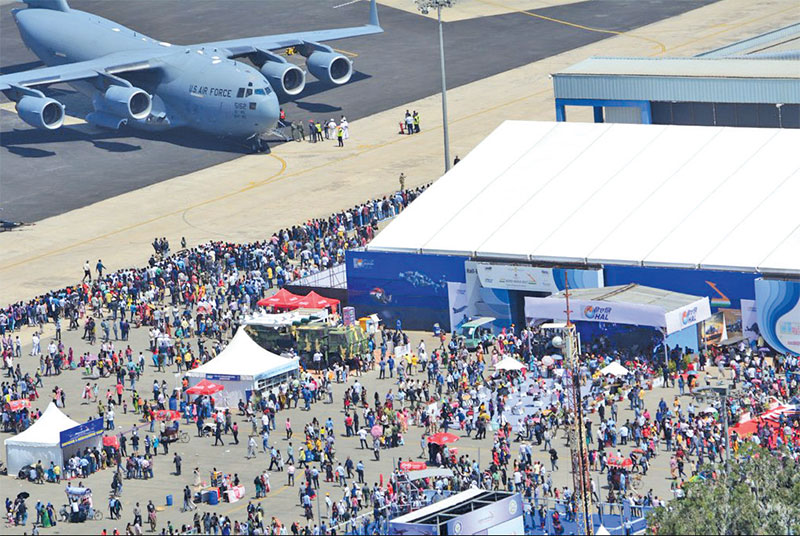Money Over Matter | Make it Brief
 Maj. Gen. Mrinal Suman (retd)
Maj. Gen. Mrinal Suman (retd)
Former defence minister Manohar Parrikar often complained that India’s Defence Procurement Procedure (DPP) was too verbose, rambling and long-winded. “One falls asleep after a few pages as it makes convoluted, heavy and confused reading”, used to be a common refrain.
Parrikar promised to have DPP simplified and downsized for easy comprehension and swift implementation. Consequently, the environment expected DPP-2016 to be a short, crisp and to-the-point document. As is the won't of the bureaucracy, it abhors brevity and thrives on superfluity. DPP-2016 surpassed all previous versions in bulk. It runs into over 450 pages and is far more complex. Even the layout does not lend itself to easy reference as it was released in parts and not as a cohesive whole.
DPP-2016 needs to be freed of superfluous padding and a number of encumbering provisions that are unnecessarily impeding smooth implementation. There are numerous appendices and annexures that can be easily dispensed with. Many aspects must be revisited to retain focus. Some have been discussed here.

An aerial shot of Aero India 2017
Plethora of Categories Lead to Confusion
The categorisation of a procurement proposal specifies the route that should be adopted to acquire the equipment. Categorisation depends on the urgency of requirement, total quantity projected, indicative cost and nature of the technology involved. The first version of DPP in 2002 specified three categories — ‘Buy’ (outright purchase of the complete requirement); ‘Buy and Make’ (purchase of part requirement from a foreign vendor and production of the balance quantity under licence in India); and ‘Make’ (indigenous development of the equipment).
In 2006, ‘Make’ route was split into three categories — ‘Make (DRDO)’ for the development of all strategic, complex and security sensitive systems; ‘Make (High-tech)’ for the development of high-tech complex systems; and ‘Make (Low-tech)’ with minimum 50 per cent indigenous content. Acquisitions under the ‘Buy’ route were also split into ‘Buy (Indian)’ and ‘Buy (Global)’. In November 2009, yet another category ‘Buy & Make (Indian)’ was created. Thus, the number of categories proliferated from three in 2002 to seven in 2009.
The ministry of defence (MoD) was not done as yet. Misconstruing creation of additional categories to be a reformative measure, DPP-2011 split shipbuilding into two categories – ‘nomination’ and ‘competitive bidding’. Under the first category, orders were to be placed on the nominated public sector shipyards. The second category allowed private sector shipyards to participate in open competitive bidding for orders. DPP-2016 introduced yet another category with overriding preference over all other modes of procurement, i.e. ‘Buy (Indian-IDDM)’. It refers to the procurement of products from an Indian vendor meeting one of the two conditions — (i) products that have been indigenously designed, developed and manufactured with a minimum of 40 per cent indigenous content; or (ii) products having 60 per cent indigenous content which may not have been designed and developed indigenously.
more
A surfeit of categories created without due deliberations is creating confusion and making the procedure more convoluted. ‘Buy (Indian)’ and ‘Make (Low-tech)’ mean the same, except the difference in indigenous content. Both can be easily merged. ‘Make (High-tech)’ was introduced in 2006 with much euphoria. It has been an utter failure. Not a single case has made any progress. The same fate awaits the much hailed ‘Buy and Make (Indian)’ procedure. A simpler and streamlined procedure with fewer categories will prove far more effective and implementable than the current one containing a plethora of categories.
Offsets are Proving Detrimental
Offsets do not come for free. Foreign vendors have to incur additional expenditure to fulfil them and hence mark up their commercial bids accordingly. It is generally believed that offsets inflate the cost of the main contract by 10 to 20 per cent. Therefore, it is universally accepted that offsets make sound business sense only if the trade-off results in extraordi
Subscribe To Force
Fuel Fearless Journalism with Your Yearly Subscription
SUBSCRIBE NOW
We don’t tell you how to do your job…
But we put the environment in which you do your job in perspective, so that when you step out you do so with the complete picture.








